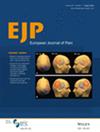Eyes on Newborns: How NICU Staff's Attention and Emotions Shape Neonatal Pain Assessment
Abstract
Background
Assessing pain in neonates is crucial for their management but is inherently subjective. This study investigated the effects of visual attention, gaze patterns, and empathic responses of neonatal healthcare professionals on their assessments of neonatal pain.
Methods
Conducted at the Department of Neonatology, University Medical Center Hamburg-Eppendorf, we employed eye-tracking to monitor staff's responses to videos depicting neonates experiencing non-noxious thermal, brief noxious, and prolonged noxious stimuli. Videos were presented in two formats: full body view, providing contextual information, and face-only view, lacking contextual details. Pain assessments were measured using a Faces Pain Rating Scale (FPRS), exploring the impacts of contextual cues, professional experience, and job roles.
Results
The study found brief and prolonged noxious stimuli eliciting significantly higher FPRS scores compared to non-painful stimuli, with the full body view resulting in higher pain ratings than the face-only view. The mouth region attracted focused attention. Nurses generally reported higher pain scores and exhibited larger pupil diameters compared to physicians, suggesting a stronger empathic response.
Conclusion
This research highlights the essential role of visual cues and empathic responses in neonatal pain assessment, demonstrating how professional roles and stimulus presentation format impact evaluations, and underlining the need for standardised protocols to improve neonatal pain management accuracy.
Significance
The study emphasises the importance of visual cues and empathy in neonatal pain assessment, highlighting the roles of healthcare professionals and stimulus presentation formats. It addresses challenges in understanding neonatal pain, advocating for standardised protocols. Using eye-tracking technology, the research explores how professionals' visual attention and empathy affect pain evaluations, suggesting more objective assessment methods.


 求助内容:
求助内容: 应助结果提醒方式:
应助结果提醒方式:


